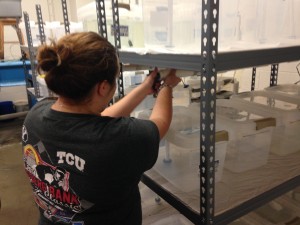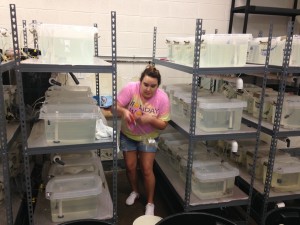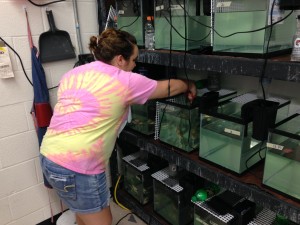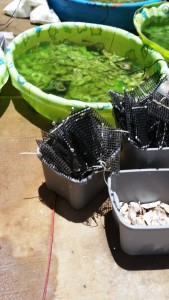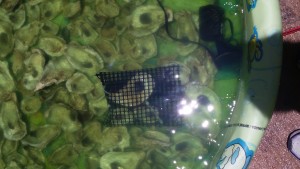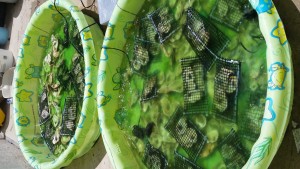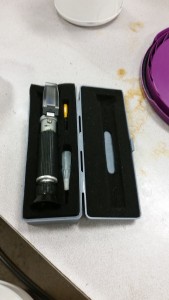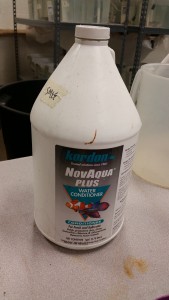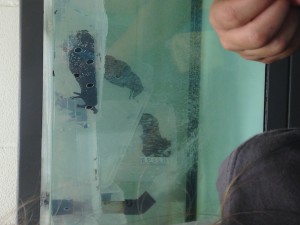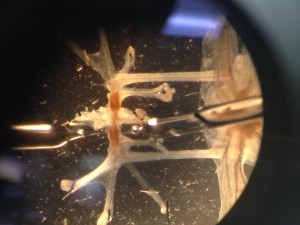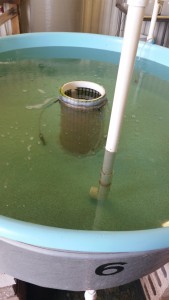The research I was involved in was with Avery Scherer, who is working under Dr. Smee , and her study involves observing predator prey interactions between oysters and their predators (blue crabs). This study is also being conducted to measure the strength and the diameter of the oysters and to find how the oysters sense the crabs. We are also seeing how the crabs effect the hardening of the oysters shells for protection from their predators (blue crabs). In addition to the shell strength and diameter we are also seeing how their weight is being effected. As you will read below we were helping with multiple studies and I am very fortunate to have seen all of the studies up close.
Who We Are
Sarah Sloan, Trisha Cruz, Amanda Blair, Joanna Blonigen, Angela Prestero, Allison Poore, Amy Baker, Monique Phillips, Priscilla Pedrazine
What We Did
On June 22, 2015 (3 hours)
Today was my first day doing research. I worked with Avery for three hours building three rows of aquariums to hold the blue crabs and oysters for her research. After finishing those aquariums, we filled up all 48 aquariums with a salt water combination that one of the graduate students made. When we finished filling the tanks, Avery brought some of the blue crabs into their aquariums. Below I have uploaded a picture of me assembling the aquarium.
On June 23, 2015 (3 hours)
Today, we finished up the last few details for the aquariums, by clamping the bubblers with stoppers made with pipes and zip ties. After that, Avery showed us how to wrangle the blue crabs. And we were able to wrangle up the rest of the blue crabs on our own. Then, Avery had us empty and clean 10 glass aquariums. After we cleaned and put back the 10 aquariums, we went by each aquarium to make sure the water was high enough and make sure the clamps were staying in place. Below I have uploaded a picture of me putting a blue crab into the aquarium and a picture of me wrangling a crab.
On June 26, 2015 (1 hour and 30 minutes)
Today, Trisha and myself finished bagging the oysters. We needed a total of 80 bags, with each bag having 3 oysters. After we finished bagging all of the oysters, we made the water solution for the blue crabs. For the solution, we filled up two trash cans and added one lid full of a special conditioner for aquariums, and four to five cups of salt. When we finished mixing this we had to check the solidity level. The salinity had to be at 20.
On June 29, 2015 (4 hours)
Today, was the first day we had field work. Avery took myself and three others to Rockport to collect oysters. We ended up filling an entire cooler with oysters. These oysters will be used to feed the blue crabs. When we got back to school, we placed all the oysters in the 10 aquariums. Now tomorrow other fellows will be using these oysters to feed the blue crabs. Below I posted a picture of the oysters we collected in the field.
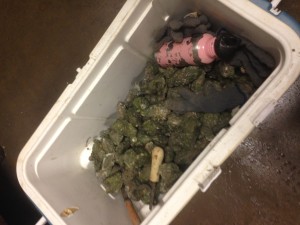
On July 7, 2015 (3 hours)
Today, in research, we did a water exchange. Instead of just exchanging the aquariums, like last time, we also exchanged the water in the 40 containers that hold two oysters each. To exchange the water, we needed to fill trash cans with salt water. We made the salt water by adding a capful of a specific conditioner and five cups of salt. Then to make sure that the water is perfect, we had to check the salinity (20). The salt water will be used for filling the aquariums, and also the 40 containers. With the aquariums, we filled them to a black line and with the 40 aquariums, some needed the salt water while others needed fresh or aged water. So when everything was filled we added phytoplankton to everything.
On July 9, 2015 (3 hours)
Today, was not like any other research day. Instead of working in the lab, we went into a classroom and saw what it will look like at the end of an experiment. First we learned about statistics and what you have to do to figure out statistics in an experiment. After learning about statistics we got all of the data from a previous experiment and put all of the data into an Excel spreadsheet. Then Avery showed us how to find a correlation between two subjects, find the t-test, p-value, mean, median, mode, and stdev. Below I have posted a link to the Excel spreadsheet that we created.
Research on July 9, 2015
On July 10, 2015 (5 hours between two tours: Indian Point- 3 hours and 30 minutes; Neurobiology Tour- 1 hour and 30 minutes)
Today was one of the best days of research, because we went to two tours. The first tour was at Indian Point. In the first tour we learned about different ways to catch and examine samples from the water. We also discussed what Indian Point was and the type of vegetation that lives in the water. The final thing we did was learn how to take the salinity of the water and how to take a chunk of the water floor to take back to see what lives in the soil, which you would need a microscope to see the organisms. The second tour was a Neurobiology Tour with Dr. Mozzachiodi. In this tour we got to see what each part of a snail’s brain does. We even got to look under a microscope at a cell of the snail’s brain. When they do look at the cell, they end up putting a very small needle into it to ask the brain cell questions. We even got to feed the snail’s in the tanks with seaweed, which was a great experience. To feed the snail we would sweep the snail’s with the seaweed and their mouth would open and suck it in. Below I have posted pictures from the Neurobiology Tour.
On July 17, 2015 (2 hours and 30 minutes)
Today was my final day that I did research. A group of us went to the Hatchery, which teaches about fishing and how they collect data in the lakes and other areas up and down the Gulf Coast. After that, we were able to take a tour of the Hatchery, where we saw tanks that have fish in each stage of their lives. We were also able to see the empty ponds, where they will be putting the fully grown fish. Then, we saw another groups professor do a dissection of a fish that they caught. Finally, we saw what some of the graduate students were working on (Kelly’s Experiment)
What We Learned
In the first week of research I learned a lot about blue crabs and oysters. I learned that blue oysters have to be in a specific solution. We had to put a blue solution to clean and maintain the water. I also learned how to properly assemble a aquarium to hold blue crabs and oysters. The final thing I learned during my first week of research is how to check the solidity of a solution.
On July 9, 2015
Today in research I learned a lot about statistics. The terms I learned for this research:
Population– all the oysters Sample– the oysters measured Variable Measurement (Dependent variable)- measurement of interest/ strength, diameter Factors (Independent variable)- measurements which may influence variable/ predator diet and predator presence Control– no treatment comparison Descriptive- mean, median, mode/ for the data Spread– range, variance, standard deviation, standard error parameters– descriptive of population Inferential statistics/ hypothesis– null and alternative p-value– chance of getting measured mean if the mean equals 0
On July 10, 2015
At Indian Point, I learned many things including what Indian Point is, which is an estuary. At Indian Point, there are four ecosystems that are thriving: Marsh, Grasslands, Oyster Reefs and White Mangroves. Now with the Indian Point Park there are three factors that are affecting the estuary: Pollution, Over- Fishing and Climate Change.
In the Neurobiology Tour I learned a lot about snails, like how they need to be kept at a cold temperature of 15 degrees Fahrenheit. I also learned that when you remove the snail’s brain, you need to keep it hydrated, feed, and given antibiotics to make sure that the brain does not get sick. I also learned that when dealing with the brain of the cell you need to have a map of the brain to determine which brain cell you are looking at. And to determine if you are looking at the correct brain cell you can monitor the cell to see how much activity it is doing, each cell does something different when it comes to the activity. So when you find the correct brain cell, you can ask the cell questions.
Questions We Have
Even though we are in summer, does a change in weather affect the crabs and oysters?
-
Since the crabs and oysters will be inside the weather does not affect them. Plus even though the oysters are outside, the tarps protect them from the wind and any rain we will get in the duration of the research.

